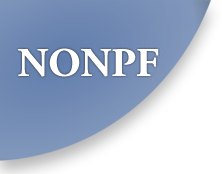Educating nurse practitioners: Developing competency based curriculum, and bridging programs for shared learning opportunities
Nurse practitioner faculty are commissioned with the responsibility to develop doctoral level curricula. They face the challenge of examining current curricula for gaps and through this process redesign their courses to represent current competencies from NONPF (NONPF, 2013). The responsibility of providing the essential academic foundation becomes additionally challenging when two programs within the same college undergo redesign simultaneously. While no two programs will likely evaluate or update curriculum in the same way, disseminating this information will contribute to a thin body of knowledge on competency based curriculum design (LeCuyer, DeSocio, Brody, Schlick & Menkens, 2009).
The recent curriculum evaluations at our College occurred out of a perfect storm of events including the release of the 2013 NONPF Competencies. Along with this, the CON was well in to final stages for reaccreditation with the completion of self-study activities and preparation for the site visit. This offered programs an opportune time to conduct healthy and robust reviews of their curriculum and mapping of curriculum to major outcomes statements, competencies and The Essentials. Lastly, both nurse practitioner programs had new leadership which added to the motivation for hearty review.
Independent yet complementary curriculum evaluation and redesign is achievable. This simultaneous process allowed the two programs to look for opportunities to develop future shared learning events as well as student learning assessments. Challenges to implementing shared events are expected but with a cohesive approach can be mitigated.

